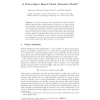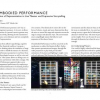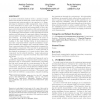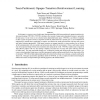65 search results - page 13 / 13 » Urologic robots and future directions |
GECCO
2009
Springer
13 years 10 months ago
2009
Springer
HyperNEAT, a generative encoding for evolving artificial neural networks (ANNs), has the unique and powerful ability to exploit the geometry of a problem (e.g., symmetries) by enc...
WAPCV
2007
Springer
14 years 4 days ago
2007
Springer
One of the first steps of any visual system is that of locating suitable interest points, ‘salient regions’, in the scene, to detect events, and eventually to direct gaze towa...
CHI
2009
ACM
14 years 25 days ago
2009
ACM
ion of Representation in Live Theater PPPPETERETERETERETER TTTTORPEYORPEYORPEYORPEY Opera of the Future, MIT Media Lab Disembodied Performance presents a new way to think about exp...
CF
2004
ACM
13 years 11 months ago
2004
ACM
In a future networked physical world, a myriad of smart sensors and actuators assess and control aspects of their environments and autonomously act in response to it. Examples ran...
AGENTS
1999
Springer
13 years 10 months ago
1999
Springer
In this paper, we present a novel multi-agent learning paradigm called team-partitioned, opaque-transition reinforcement learning (TPOT-RL). TPOT-RL introduces the concept of usin...




